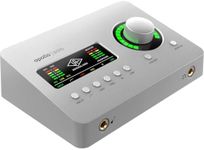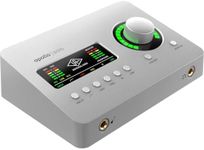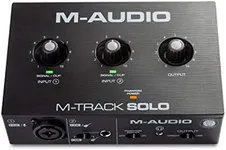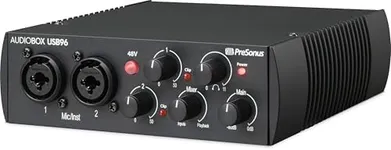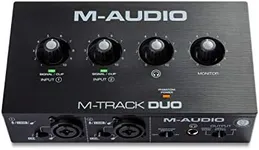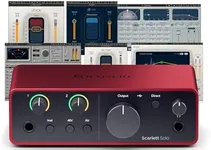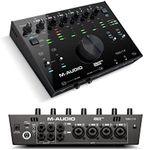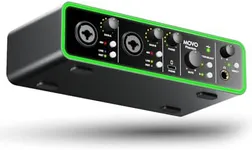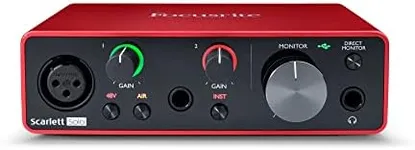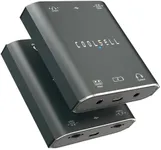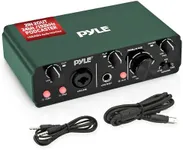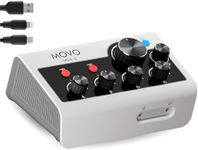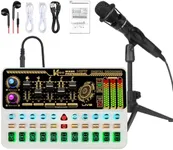Buying Guide for the Best Audio Interface For Guitars
Choosing the right audio interface for your guitar is crucial for achieving the best sound quality and ensuring a smooth recording experience. An audio interface acts as the bridge between your guitar and your computer, converting the analog signal from your guitar into a digital signal that your computer can process. When selecting an audio interface, it's important to consider several key specifications to ensure it meets your needs and enhances your music production process.Input/Output ConfigurationThe input/output configuration refers to the number and types of inputs and outputs available on the audio interface. This is important because it determines how many instruments or microphones you can connect simultaneously and how you can route the audio signals. For guitarists, at least one high-impedance (Hi-Z) input is essential for directly connecting your guitar. If you plan to record vocals or other instruments, look for interfaces with additional XLR or combo inputs. Consider your recording setup and future needs to decide on the right configuration.
Audio Quality (Bit Depth and Sample Rate)Audio quality is determined by the bit depth and sample rate of the audio interface. Bit depth affects the dynamic range and noise floor, while the sample rate impacts the frequency response. Higher values generally provide better sound quality. Common bit depths are 16-bit and 24-bit, with 24-bit offering more headroom and detail. Sample rates typically range from 44.1 kHz to 192 kHz. For most guitar recordings, 24-bit/48 kHz is sufficient, but if you require higher fidelity, consider interfaces that support higher sample rates.
LatencyLatency is the delay between when you play your guitar and when you hear the sound through your computer. Low latency is crucial for a seamless playing and recording experience. Latency is influenced by the audio interface's drivers and the connection type (USB, Thunderbolt, etc.). Look for interfaces with low-latency drivers and consider faster connection types like Thunderbolt if minimal latency is a priority for you. If you plan to use real-time effects or monitoring, low latency becomes even more important.
ConnectivityConnectivity refers to how the audio interface connects to your computer. Common connection types include USB, Thunderbolt, and FireWire. USB interfaces are widely compatible and generally sufficient for most guitarists. Thunderbolt offers faster data transfer rates and lower latency, making it ideal for more demanding recording setups. Consider the ports available on your computer and choose an interface with a compatible connection type that meets your performance needs.
Phantom PowerPhantom power is a feature that supplies power to condenser microphones through the audio interface. This is important if you plan to use condenser mics for recording vocals or acoustic instruments. Phantom power is typically provided at 48 volts and is a standard feature on most audio interfaces with XLR inputs. Ensure the interface you choose has phantom power if you need it for your recording setup.
Build Quality and PortabilityBuild quality and portability are important considerations, especially if you plan to use the audio interface in different locations or on the go. A sturdy, well-built interface will withstand the rigors of travel and frequent use. Portable interfaces are typically smaller and lighter, making them easier to carry around. Consider your recording environment and whether you need a durable, portable interface or if a larger, stationary unit is more suitable for your needs.
Software Compatibility and Bundled SoftwareSoftware compatibility ensures that the audio interface works seamlessly with your digital audio workstation (DAW) and other recording software. Check that the interface is compatible with your preferred DAW and operating system. Many audio interfaces come with bundled software, such as recording software, virtual instruments, and effects plugins. These can add value and enhance your recording capabilities. Consider the software included and whether it meets your needs or complements your existing setup.


